Graphics Reference
In-Depth Information
9.7
Parallel Curves
Parallel curves and surfaces are topics that, if discussed at all, are usually only men-
tioned briefly or are relegated to the exercises in topics on differential geometry. They
are however important for CAGD where they are called offset curves and surfaces and
for that reason we shall devote more time to them here. This section will summarize
some of the relevant properties of planar parallel curves. Section 9.14 will consider
parallel surfaces.
Consider a planar regular parametric curve
()
=
(
() ()
)
pt
xt yt
,
,
and let n(t) be the principal normal to the curve at p(t).
Definition.
A
parallel curve
to p(t) is a parameterized curve of the form
d
()
=
()
+
()
,
p
t
p t
dn t
(9.31)
where d is any real number. In CAGD a parallel curve is called an
offset curve
.
Figure 9.14 shows some parallel curves. The figures also show some potential
problems. Parallel curves could have self-intersections even if the original does not.
They may intersect the original curve.
The tangent vector to p
d
(t) is parallel to the tangent vector to p(t). In fact,
¢
()
=
()
+
(
()
)
pt pt
1
k
td
,
(9.32)
where k(t) is the curvature function of p(t). This follows from equation (9.11). It is
easy to see from Proposition 9.3.3 and equation (9.32) that the curvature function
k
d
(t) for p
d
(t) is defined by
()
k
k
t
()
=
k
d
t
.
(9.33)
()
1
+
td
(a)
(b)
Figure 9.14.
Parallel curves.

